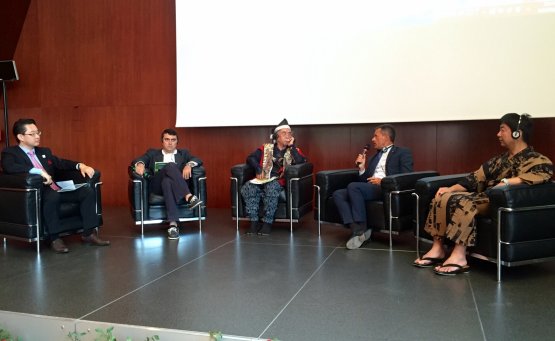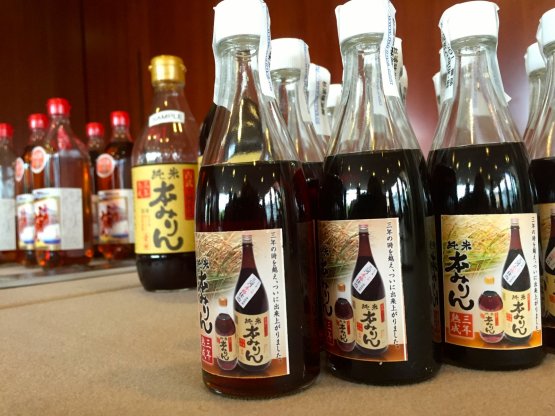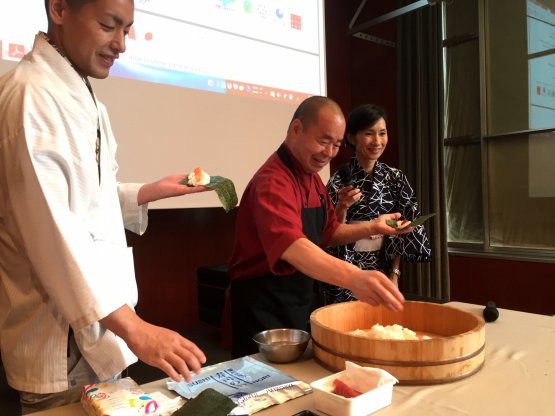«Putting aside chefs as deus ex machina, fermentation is based on respect and collaboration between man and nature, a profound and marvellous concept». At Identità Golose we think highly of Cristina Bowerman; this is why I thought it right to read once again a beautiful article she wrote for us two and a half years ago, and start from these very words of hers today’s piece on fermentation, after the nice symposium the prefecture of Aichi decided to dedicate to this theme.
Aichi is located in central Japan: this territory represents an unlimited source of fermented foods, considered one of the two secrets of Japanese cuisine, the other being umami broths (we wrote about it recently). Here you can find the most ancient producer of mirin and the most important one of vinegar, many varieties of shoyu (soy sauce) and miso, over 40 sake producers… In other words, all the fermented condiments that best characterise the cuisine of the island in terms of rich taste and healthiness.

The summit in Milan. Left to right, Mototsugu Hayashi, Marco Massarotto, Asai Nobutaro, Andrea Pezzana and Masashi Kato
These are precious foods that derive from refined production processes, explained
Masashi Kato, who teaches at Meijo university. As in the case of
haccho miso, that is to say soy miso, based on simple raw materials – fermented koji soy and salt, that’s it – and a very long fermentation process lasting around 1000 days. The result, however, is extraordinary.
This is just one possible example: almost all of the above characteristics can be found, for instance, in the shoyu soy sauce, and particularly in the rare tamari shoyu, produced from the filtered liquid collected during the fermentation process of soy miso, whose sapid thickness is perfectly paired with sashimi, sushi, as well as all the teriyaki recipes.

Shoyu, mirin, Japanese vinegar...
And of course one needs to mention
mirin, a sort of sweet saké made with glutinous rice, malted rice and alcohol, One could go on and on, yet this concept will be enough: fermented foods are common all around the world (think about cheese, wine, cured meat…) but those made in Japan have unique characteristics. Japanese people have put to use the climate of their land to develop a real “mould culture”: thanks to the high decomposition power of
koji-kin (Aspergillus oryzae mushroom) proteins and amides are transformed into essential components of the
umami flavour.
A blessing whose typicality and originality needs to be defended, as recalled by Andrea Pezzana, who teaches nutrition at Università di scienze gastronomiche in Pollenzo: «At Slow Food we’re committed in creating a bridge between Mediterranean and Japanese diet, in search of common elements in favour of healthiness and of the added value given by artisanal production».

Haruo Ichikawa at work at the end of the symposium
It is therefore obvious that initiatives destined to spread the culture around these products will also increase in our country.
Marco Massarotto, president of association
La via del sake, has illustrated the growing interest for this Japanese drink, which will lead, among other things, to the second edition of the
Milano Sake Festival, on 12th-13th September.
Mototsugu Hayashi, best sommelier in Italy in 2012, stressed that: «
Sake is perfect with truffle, bottarga, clams, parmigiano, prosciutto. And there’s nothing better with oysters». It is still scarcely exported, however. Only 2-3% of the production.